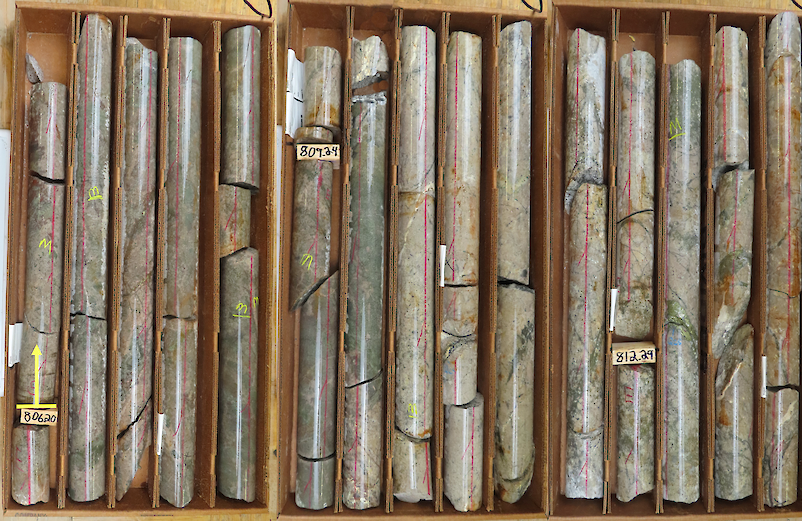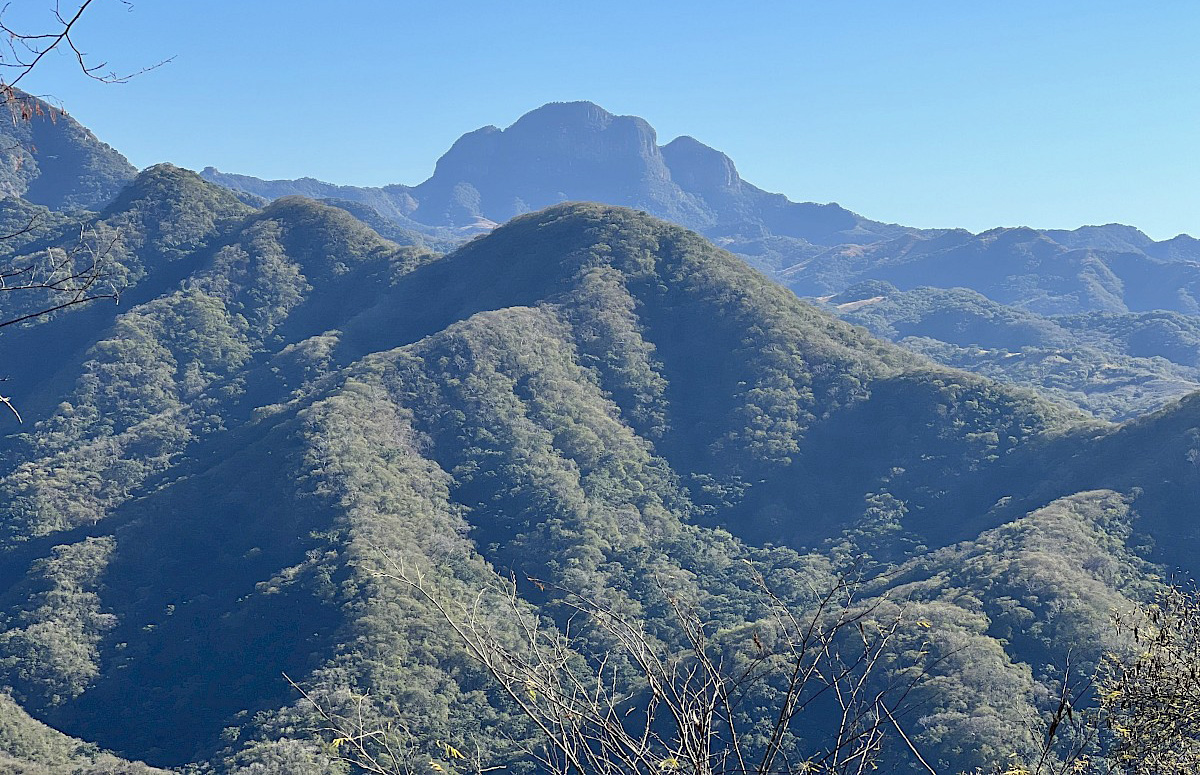The Mining Report: You cover oil and gas companies in North America, Latin America and Europe. Which are benefiting from the current instability in oil and gas pricing, and how are they benefiting?
Etienne Moshevich: Not only are investments in the oil and gas sector made more risky by the instability in the oil price, but loans for developing countries become a lot tougher to obtain and are sometimes severely reduced. As the price of oil increases, it threatens oil-importing nations, which must continue to pay interest on their debt. As the price of oil decreases, it makes it harder for oil-exporting nations, like Mexico, to continue their interest payments. Savvy investors look for every opportunity to decrease their risk, therefore as oil prices fluctuate, many look to stable jurisdictions like Canada and the U.S., as North American oil explorers and producers don't have the same worries as explorers and producers in countries with riskier credit ratings.
TMR: Argentina acts the bad boy of international finance. How does it manage to continue to attract foreign investment?
EM: The market seems to be overlooking a massive opportunity in Argentina. Argentina's Vaca Muerta could be the biggest shale play in the world, and some of the biggest oil companies are flocking to the area to get a piece of the action.
According to a Reuters article by John Kemp published on July 21, 2014, "Argentina is thought to have more shale oil than the United States—which could potentially push it into the ranks of the world's biggest oil producers. Nearly all this shale oil and gas is contained in the Vaca Muerta and Los Molles shale formations. The Neuquen basin, therefore, ranks as one of the most highly prospective shale plays in the world and one of the most likely to be developed outside North America."
"Madalena Energy Inc.'s acquisition in Argentina provides a sizeable footprint in arguably one of the biggest shale plays in the world."
Majors are paying as much as $11,000/acre for a piece of the play; if the majors aren't afraid of being expropriated, neither should investors. The Reuters article even addresses the issue of political risk: "Argentina's history of political and economic instability, serial debt defaults, devaluations, and expropriations of foreign property. . .make[s] outside investors wary. But the prize is enormous, too big for international oil companies to ignore, and the country's politicians, from the president downwards, show a strong awareness of the need for foreign capital and expertise to develop what could be a transformational national asset."
The only expropriation in Argentina happened to its state-owned oil company YPF. . .no one else. That was an isolated incident, which shouldn't deter investors.
TMR: Can you talk about the benefits for a smaller company entering the oil sector in Argentina? What is the upside?
EM: For example, Madalena Energy Inc. (MVN:TSX.V; MDLNF:OTCPK) acquired Gran Tierra Energy Inc.'s (GTE:TSX; GTE:NYSE.MKT) Argentina business unit, which was very accretive for shareholders, as it provides Madalena with a solid foundation and sizeable footprint in arguably one of the biggest shale plays in the world. Post-acquisition, the company has a large portfolio of opportunities across 14 concessions, with multiple horizontal development plays, an extensive exploration portfolio on high-impact conventional exploration assets and a multibillion-barrel asset base for unconventional shale and tight sand plays.
If we look at the acquisition based on fundamentals, Madalena got the asset at a huge discount. The company paid just $9.67 per barrel of oil equivalent for Proved and Probable reserves, or just $19,000 ($19K) per flowing barrel of production, which is extremely cheap compared to transactions with similar production levels. With this acquisition Madalena triples its production, and could dramatically increase its cash flow in 2014 and 2015 respectively.
TMR: Has Jagercor Energy Corp. (EM:CNSX; JAMTF:OTC) succeeded in finding and financing a Argentinean good asset yet?
EM: Jagercor has not found an asset yet, but is working diligently to close on one shortly. When I decided to invest in Jagercor, I took a chance on the management team. The company is led by an incredible operator in Edgardo Russo, a former YPF operator who was responsible for the Loma La Lata production area. The company also has Matias Bullrich, a very experienced capital markets executive, who comes to Jagercor from two outstanding New York investment powerhouses, Morgan Stanley and SAC Capital. His capital-market savvy and contacts are second to none.
TMR: What companies in the Canadian oil patch look most promising to you? What do you like about them?
EM: High North Resources Ltd. (HN:TSX.V) has been prudent in using the $16 million ($16M) net it has raised to date, plus organic cash flow, to get five Montney Formation oil wells on-stream, and to derisk the play over the 20 contiguous sections on which it currently has a working interest of 100%. Based on direct offset competitor activity, these 20 sections could be developed fully, with a total of 160 Montney horizontals. Based on this, 97% of the derisked well locations remain undeveloped, leaving room for a large amount of growth and/or a potential takeover.
TMR: What do you expect for High North in the next year or so?
EM: Additional production from two new wells and installation of permanent facilities will result in increased revenues, from double to triple the current well count.
TMR: Is there another North American company that has caught your eye?
EM: Jericho Oil Corp. (JCO:TSX.V) is a low-cost oil developer, probably the lowest cost oil developer I've seen, which means its well costs are less than $100K per well. Costs are actually even less than that, because in its presentation the company states it completes producer-injector pairs at $62K all-in-cost. And even with consistent and constant well completions per week, Jericho has ample cash reserves from its completed $6.55M financing to acquire more land.
What does this mean for the investor? The company states it has 3,100 acres and optimized spacing of 2.5 acres, which totals 1,240 drillable opportunities. If we are conservative—let's assume half of those are really drillable—that leads us to 620 opportunities. Historically, each one of Jericho's wells, on average, does 1–2 barrels commercial production per day, and when waterflood activates, you're roughly looking at 2x that commercial rate. Is there upside to this number? Absolutely.
Most investors look at this company and get trapped into thinking each of its wells produces 1 barrel a day (1 bbl/d), but I assume this would be the base case. The upside and value in this company is the probability that many of these wells will not just be 1 bbl/d, they could be 1.2, 1.5, or 2 bbl/d. . .and when waterflood activates, these small differences make a huge impact.
"The market seems to be overlooking a massive opportunity in Argentina."
The two contiguous properties that Jericho recently added to its portfolio in eastern Kansas, called EKan-3, total 414 acres and did not require a significant cash outlay. Additionally, Jericho acquired production on its properties, and that production has increased since the company started bringing new wells online in its recently completed phase 1 development drilling program. EKan-3 is in a particular channel that has been a prolific oil-producing reservoir, with over 5 million barrels of cumulative production. The potential upside for shareholders is that Jericho now has more drillable acreage to increase its production and cash flow, as well as to provide important geological knowledge to help define the field and increase its reserves, all of which should add value.
TMR: Canada's Athabasca Basin, which has the highest-grade uranium in the world, is generally described as the most prolific uranium source. Yet the price of uranium keeps sliding to historic lows, and is now at $28.25 per pound ($28.25/lb). At what price do the economics no longer work?
EM: It would be at a price below $20/lb. Cameco Corp. (CCO:TSX; CCJ:NYSE) reports a cash cost to produce at McArthur River at $20/lb, and at Cigar Lake, it is officially reported at $18.60/lb. But with production no longer being a two-phase process, some estimate the costs as closer to $14/lb to process milled ore. That is the pure economics, however. The reality is different. In May of this year Cameco chose to put its Millennium Project on hold for the foreseeable future.
Due to the incredibly rich grade of uranium in many of the Athabasca Basin's deposits, companies can still mine those deposits economically, even when the price of the commodity is at the lows seen recently. It is one of the only places in the world where you can mine uranium and still make a profit at a spot price less than $30/lb. In fact, even at $20/lb, a number of the basin deposits and mines would still turn a profit.
To put it in perspective, a tonne of ore with a grade of 5% U3O8 has a value of over $3,000 at the current spot price for uranium (some mines in the basin have average grades over 15%). The gold equivalent grade would be over 70 grams per ton (70 g/t) at the current spot price for gold. The quality of Athabasca Basin uranium deposits makes them highly attractive exploration targets for junior miners, as it offers some downside protection from a deteriorating spot price.
TMR: What do the companies you cover in the basin bring to the market that makes them attractive?
EM: There are three key points to note for Lakeland Resources Inc. (LK:TSX.V). First off is the management. Lakeland, over the past year and a half, has put together a strong team that is well versed in the uranium space; namely with experience in the Athabasca Basin. This includes the geological team (Dahrouge Geological Consulting Ltd.), the company's directors and its advisory board as well. Second is the quality of the properties Lakeland has assembled. Most, if not all, of its properties come with extensive historic exploration to draw from, some with known conductors and some with drill-ready targets. Third, Lakeland has a good share structure, and with a financing completed earlier this year, the company is in a good position to advance its projects.
Skyharbour Resources Ltd. (SYH:TSX.V) continues to distinguish itself from other uranium exploration companies with projects focused in the Athabasca Basin. The company holds interest in one of the largest land packages in the basin, consisting of more than 390,000 hectares over eight properties. This includes one of the most dominant land positions strategically located in all directions around Fission Uranium Corp.'s (FCU:TSX.V) Patterson Lake South high-grade uranium discovery, as well as NexGen Energy Ltd.'s (NXE:TSX.V) recent discovery at Rook 1, on the southwestern flank of the basin.
Skyharbour is employing a unique strategy to execute its plan of making the next discovery in this region without substantial equity dilution to shareholders. It is utilizing a syndicate model, with three other companies, to fund a $6M exploration program over two years, of which Skyharbour only has to pay $1M. The syndicate structure benefits Skyharbour with other value-add synergies, including leveraging a combined geological team with more than 200 years of experience in the basin, including Skyharbour's own head geologist, Rick Kusmirski, who has more than 40 years of experience in the basin with Cameco and JNR Resources Inc. (JNN:TSX.V; JNRRF:OTCPK).
"Savvy investors look for every opportunity to decrease their risk, therefore as oil prices fluctuate, many look to stable jurisdictions like Canada and the U.S."
Furthermore, Skyharbour recently entered into an agreement to acquire 100% of the highly prospective Way Lake and Yurchison Lake uranium projects from Denison Mines Corp. (DML:TSX; DNN:NYSE.MKT) at a very attractive valuation. The Way Lake property boasts a shallow, NI-43-101-compliant Inferred mineral resource totaling 7 million pounds (7 Mlb) U3O8 and 5.3 Mlb thorium, which is open along strike and at depth. The company also holds a 60% interest in the Mann Lake uranium project southwest of the McArthur River Mine, and adjacent to ground where Cameco and International Enexco Ltd. (acquired by Denison) recently made a high-grade uranium discovery.
Skyharbour offers investors multiple value drivers and robust discovery potential with its strong portfolio of projects around the basin. The company is undervalued relative to its peer group, and is well structured, with 57M shares outstanding and insiders owning more than 20% of those.
Declan Resources Inc. (LAN:TSX.V) has secured an impressive strategic land position in Canada's Athabasca Basin of over 340,000 acres. This includes drill-ready properties that have benefited from significant exploration activities.
The latest exploration program at Gibbons Creek revealed extremely promising values from RadonEx, with a peak of 9.93 picocuries/square meter/second—believed to be one of the highest RadonEx values recorded to date for the Athabasca Basin—along with surface radioactive boulders up to 4.28% U308. Both are impressive key indicators of uranium deposits, and will be used in conjunction with an abundance of historical data to pinpoint mineralization.
Proven management is led by David Miller, Declan's president and CEO. Miller, the former CEO of Strathmore Minerals Corp., which sold to Energy Fuels Inc. (EFR:TSX; EFRFF:OTCQX; UUUU:NYSE.MKT) in 2013, is a well known senior figure in the uranium market. Miller has previously worked for AREVA SA (AREVA:EPA), and consulted extensively for the International Atomic Energy Commission. Dr. Hikmet Akin, a geologist and Ph.D. in engineering, is alongside. Dr. Akin was CEO of the original Uranerz Exploration and Mining Ltd., which was the third largest uranium producer in the world before being bought by Cameco. The combination of developed properties and strong leadership makes Declan a highly attractive uranium investment.
TMR: Are there other prospects in the mining sector that you'd like to discuss?
EM: Source Exploration Corp. (SOP:TSX.V) is a great company to be following right now. The company is led by a very successful and experienced management team that had a big win in 2012, with the sale of Goldbrook Ventures to a large Chinese group, Jilin Jien Nickel Industry Co. Ltd.
One of the things I love about the 2012 deal is the fact that David Baker, now Source's executive chairman, accumulated his position in the market. After selling Goldbrook, he was looking for another deal to sink his teeth into. When he came across Source, he loved it so much that he took a position in the market, restructured the board, put his own money into the treasury and took control. Baker brings a tremendous following both on the retail and institutional side, which will look to support him every step of the way.
The project itself looks to have great potential as well. Drill results of 2.7 g/t gold over 97 meters (97m), and 1.6 g/t gold over 114m were promising, and caught the attention of some large investors in the industry. Mexico has traditionally been a hot area to explore, with the likes of Torex Gold Resources Inc. (TXG:TSX) creeping past a $1.1 billion valuation and building a viable deposit. Source is hoping to follow in Torex's footsteps. The company expects more drill results, so investors should stay tuned. Even in a time when junior gold stories are lagging, Source could potentially bring substantial returns to its shareholders.
TMR: Can you leave our readers with a piece of advice for how to navigate the turbulent waters of the energy investing space?
EM: You need to invest in sound fundamentals, and even better management teams with successful track records. I have seen great projects not get the valuation they deserve due to poor management. Great management teams work wonders with average projects, and build great value for shareholders. Management needs to have skin in the game, and be aligned with shareholders to assure that it doesn't take unnecessary risks.
Look for companies investing in proven areas with the necessary capital behind them. The last thing we want to see are companies going back to the market to raise additional cash with each well they drill. Companies with proven teams and substantial funds behind them will give any investor the best chance of increasing the value of their investments.
TMR: Thank you for your time.
Etienne Moshevich is the editor of Alphastox.com. Moshevich is also the president of Transcend Resource Group, an investor relations company based in Vancouver, B.C., and specializing in exposing undervalued companies to the marketplace. With a degree in economics, Moshevich has helped finance many successful mining, oil and gas, technology and biotech companies over the years, many of which have rewarded shareholders with substantial returns.
Read what other experts are saying about:
Want to read more Mining Report interviews like this? Sign up for our free e-newsletter, and you'll learn when new articles have been published. To see recent interviews with industry analysts and commentators, visit our Streetwise Interviews page.
DISCLOSURE:
1) Tom Armistead conducted this interview for Streetwise Reports LLC, publisher of The Gold Report, The Energy Report, The Life Sciences Report and The Mining Report, and provides services to Streetwise Reports as an independent contractor. He owns, or his family owns, shares of the following companies mentioned in this interview: None.
2) The following companies mentioned in the interview are sponsors of Streetwise Reports: Energy Fuels Inc., Fission Uranium Corp., Madalena Energy Inc. Lakeland Resources Inc. is affiliated with Zimtu Capital Corp, a sponsor of Streetwise Reports. Streetwise Reports does not accept stock in exchange for its services.
3) Etienne Moshevich: I own, or my family owns, shares of the following companies mentioned in this interview: High North Resources Ltd., Madalena Energy Inc., Jagercor Energy Corp., Skyharbour Resources Inc., Source Exploration Corp. and Declan Resources Inc. My company has a financial relationship with the following companies mentioned in this interview: I am the sole owner of Transcend Resource Group. Transcend Resource Group has been paid a consulting fee for conducting independent reviews of Jericho Oil Corp, Lakeland Resources Inc. and Madalena Energy Inc. High North Resources Ltd. is a client of Transcend Resource Group and has paid a fee for consulting services. Transcend Resource Group is a shareholder in Declan Resources Inc., Skyharbour Resources Inc. and Source Exploration Corp. Jagercor Energy Corp is a client of Transcend Resource Group. I was not paid by Streetwise Reports for participating in this interview. Comments and opinions expressed are my own comments and opinions. I had the opportunity to review the interview for accuracy as of the date of the interview and am responsible for the content of the interview.
4) Interviews are edited for clarity. Streetwise Reports does not make editorial comments or change experts' statements without their consent.
5) The interview does not constitute investment advice. Each reader is encouraged to consult with his or her individual financial professional and any action a reader takes as a result of information presented here is his or her own responsibility. By opening this page, each reader accepts and agrees to Streetwise Reports' terms of use and full legal disclaimer.
6) From time to time, Streetwise Reports LLC and its directors, officers, employees or members of their families, as well as persons interviewed for articles and interviews on the site, may have a long or short position in securities mentioned. Directors, officers, employees or members of their families are prohibited from making purchases and/or sales of those securities in the open market or otherwise during the up-to-four-week interval from the time of the interview until after it publishes.




































